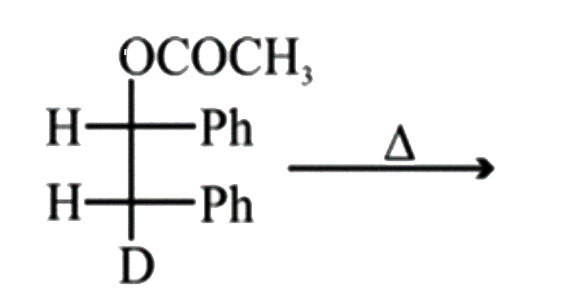Identify the correct statement about the role of regulatory proteins in transcription in prokaryotes?
Regulatory proteins can act both as activators and as repressors.
Decrease in expression
No effect on expression
Increase in expression
To identify the correct statement about the role of regulatory proteins in transcription in prokaryotes, we need to understand the function of these proteins and how they interact with the genetic material during transcription.
1. Understanding Prokaryotic Transcription:
- In prokaryotes, transcription is the process where DNA is converted into mRNA. This occurs in the cytoplasm since prokaryotes lack a defined nucleus.
Hint: Remember that prokaryotes do not have a nucleus, which affects how transcription occurs.
2. Role of Regulatory Proteins:
- Regulatory proteins are crucial for controlling gene expression. They can act as activators or repressors, influencing whether transcription occurs or not.
Hint: Think about how proteins can either promote or inhibit the transcription process.
3. The Operon Model:
- The operon model explains how genes are regulated in prokaryotes. An example is the lac operon, which is typically turned off but can be activated in the presence of lactose.
Hint: Recall the concept of an operon and its components: promoter, operator, and structural genes.
4. Inhibitory Proteins:
- In the lac operon, an inhibitory protein binds to the operator region, preventing transcription. When lactose is present, it binds to the inhibitory protein, causing it to release from the operator, allowing transcription to proceed.
Hint: Consider how the presence of a substrate (like lactose) can influence the activity of regulatory proteins.
5. Dual Action of Regulatory Proteins:
- Regulatory proteins can function in two ways: as repressors (decreasing transcription) or as activators (increasing transcription), depending on the conditions and the presence of specific molecules.
Hint: Remember that regulatory proteins can have opposing effects based on environmental conditions.
6. Evaluating Statements:
- Based on the above understanding, we can evaluate statements regarding the role of regulatory proteins. The correct statement would reflect their ability to either inhibit or promote transcription, as seen in the lac operon example.
Hint: Look for statements that mention the dual role of regulatory proteins in controlling transcription.
Conclusion:
The correct statement about the role of regulatory proteins in transcription in prokaryotes is that they can act as both activators and repressors, depending on the presence of specific substrates (like lactose in the lac operon).
- In prokaryotes, transcription is the process where DNA is converted into mRNA. This occurs in the cytoplasm since prokaryotes lack a defined nucleus.
- Regulatory proteins are crucial for controlling gene expression. They can act as activators or repressors, influencing whether transcription occurs or not.
- The operon model explains how genes are regulated in prokaryotes. An example is the lac operon, which is typically turned off but can be activated in the presence of lactose.
- In the lac operon, an inhibitory protein binds to the operator region, preventing transcription. When lactose is present, it binds to the inhibitory protein, causing it to release from the operator, allowing transcription to proceed.
- Regulatory proteins can function in two ways: as repressors (decreasing transcription) or as activators (increasing transcription), depending on the conditions and the presence of specific molecules.
- Based on the above understanding, we can evaluate statements regarding the role of regulatory proteins. The correct statement would reflect their ability to either inhibit or promote transcription, as seen in the lac operon example.
The correct statement about the role of regulatory proteins in transcription in prokaryotes is that they can act as both activators and repressors, depending on the presence of specific substrates (like lactose in the lac operon).
Topper's Solved these Questions
- BOOK - EDUCART PUBLICATIONCHAPTER - SAMPLE PAPER 10EXERCISE - SECTION-C10videos
SAMPLE PAPER 10
- BOOK - EDUCART PUBLICATIONCHAPTER - SAMPLE PAPER 10EXERCISE - SECTION-C10videos
SAMPLE PAPER 10
- BOOK - EDUCART PUBLICATIONCHAPTER - SAMPLE PAPER 1 EXERCISE - SECTION-C12videos
SAMPLE PAPER 1
- BOOK - EDUCART PUBLICATIONCHAPTER - SAMPLE PAPER 2 EXERCISE - SECTION-C12videos
SAMPLE PAPER 2
Similar Questions
Knowledge Check
- Question 1 - Select One
Identify the correct statement about lactose.
AIt consists of one galactose and one glucose unitBMutarotation is not possibleCAnomeric carbon of galactose is attached to 4' carbon of glucose which is β-1,4' glycoside bond.DLactase is not used to cleave the β−1,4'-glycoside bond. - Question 2 - Select One
Identify the incorrect statement about frog.
AParathyroid and pineal body are presentBThere are ten cranial nerves onlyCOptic lobes are situated in the mid brainDThe ventricle opens into the conus arterisus - Question 3 - Select One
Identify the correct statement about the reaction -
 Ait is a syn - eliminiation reaction and gives cis alkeneBit is an anti-elimination reaction and gives trans alkeneCit is a syn - elimination reaction and gives Trans alkeneDthe product does not contain deuterium
Ait is a syn - eliminiation reaction and gives cis alkeneBit is an anti-elimination reaction and gives trans alkeneCit is a syn - elimination reaction and gives Trans alkeneDthe product does not contain deuterium

